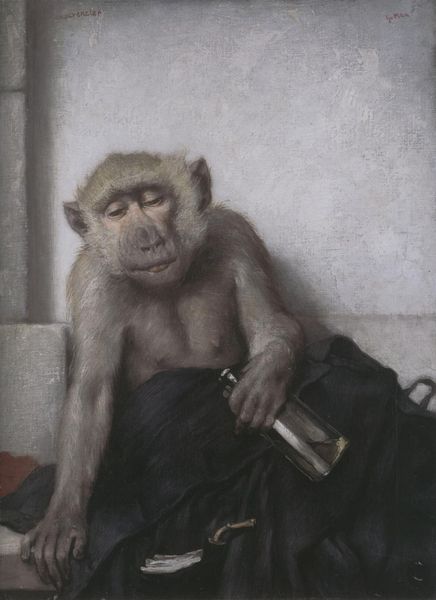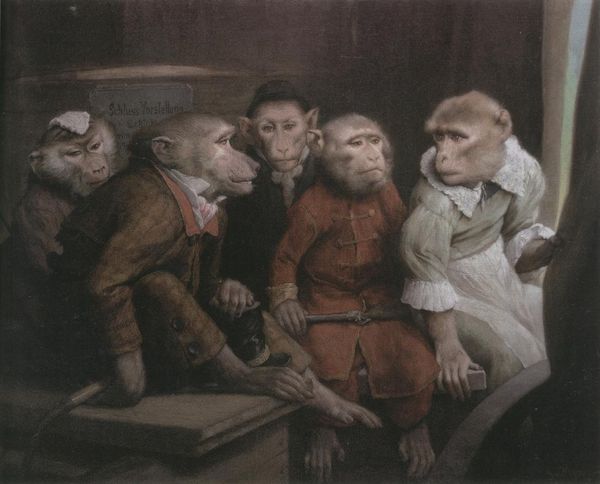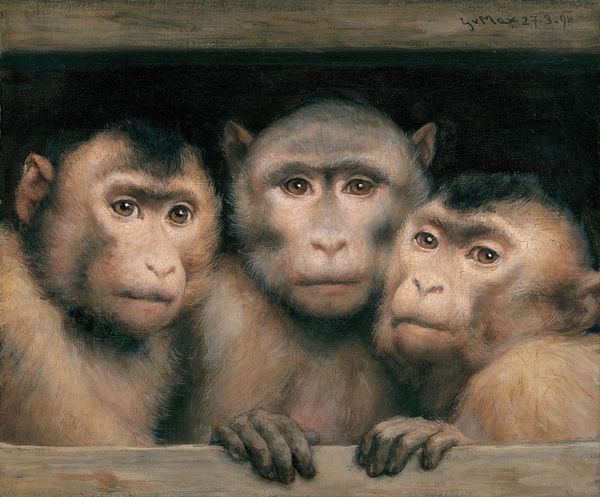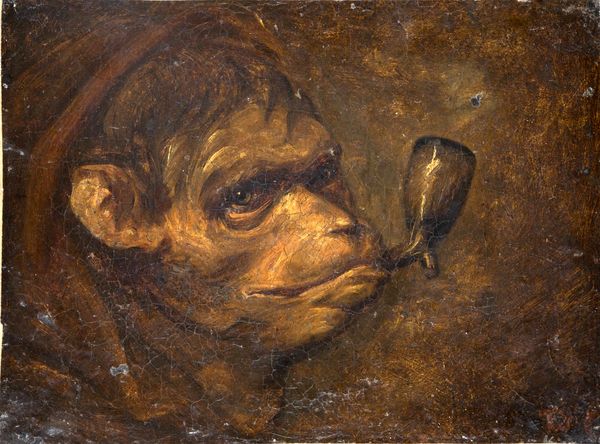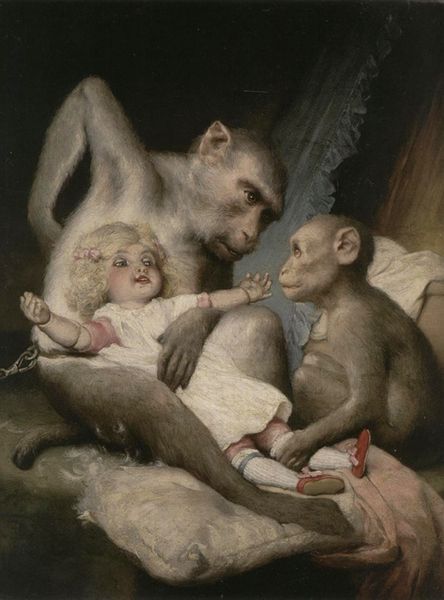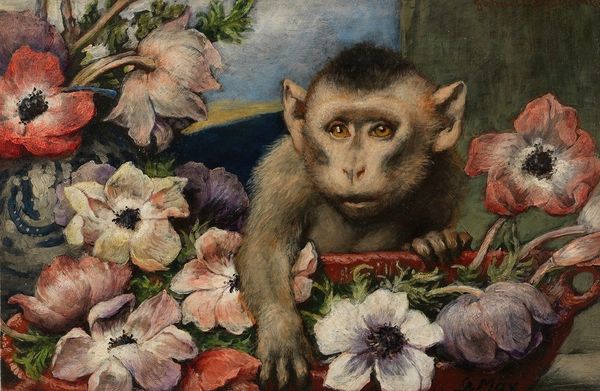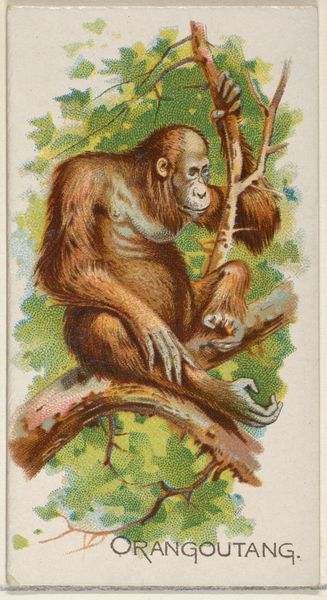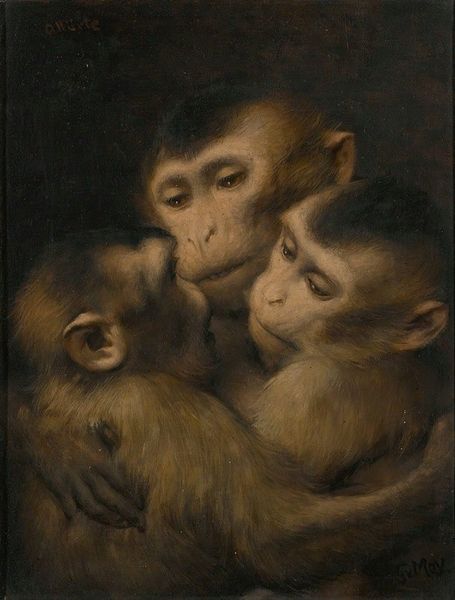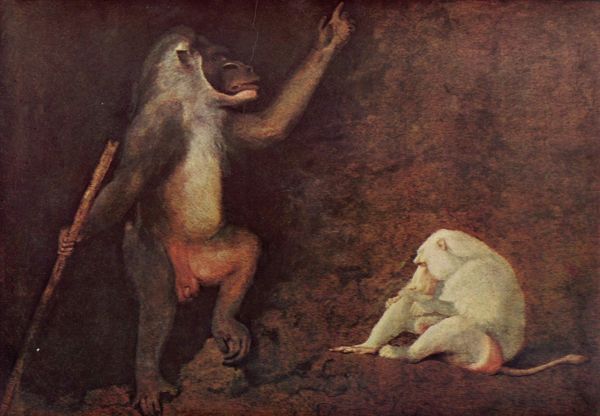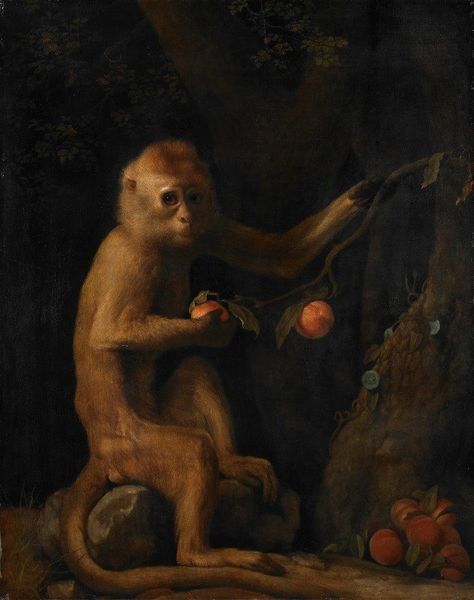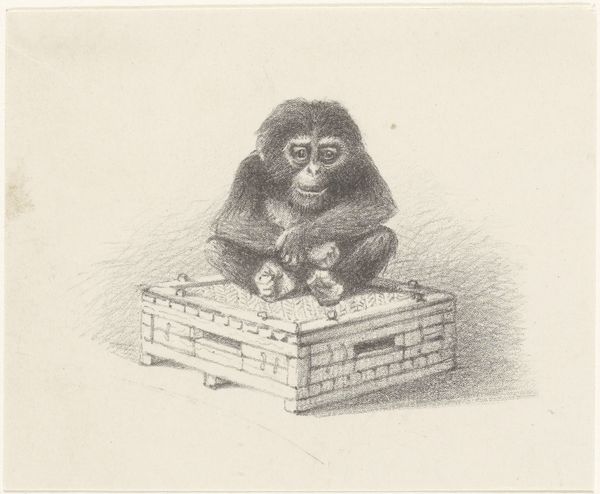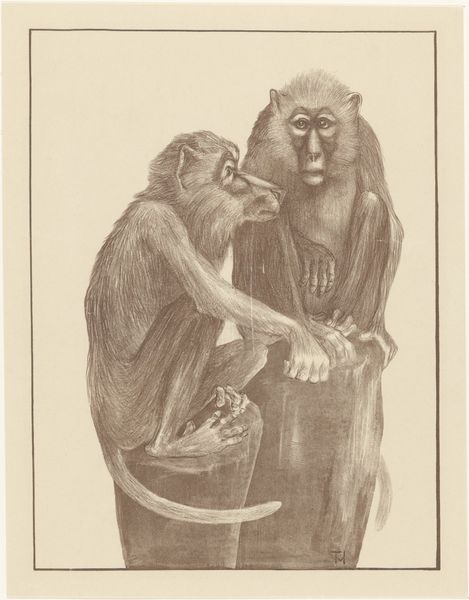
painting, oil-paint
#
portrait
#
painting
#
oil-paint
#
sculpture
#
charcoal drawing
#
oil painting
#
romanticism
#
genre-painting
#
academic-art
#
charcoal
#
realism
Copyright: Public domain
Editor: So, this piece is called "Monkeys at the Piano," attributed to Gabriel von Max. It seems to be an oil painting, though its exact date is unknown. It’s… unexpected, to say the least! What strikes you most about this work? Curator: What immediately grabs my attention is how this painting intersects scientific curiosity with social commentary. How do you see the positioning of the monkeys and the setting functioning within a broader historical discourse? Editor: Well, they appear to be mimicking human behaviour, but also parodying it. It feels like a satire on the pretentiousness of the upper class or academic circles of the time. Curator: Exactly. Consider the rise of evolutionary theories in the 19th century, specifically Darwin’s "Descent of Man." Do you think this image might be playfully engaging – or perhaps critically engaging – with the debates about humanity’s place in the natural order? Editor: That makes sense! The monkeys’ presence and activity in such a refined, human setting definitely challenge traditional views of human exceptionalism. Were primates a common subject in art at that time? Curator: Depictions of primates, particularly monkeys, became increasingly common during this period, often used to explore themes of mimicry, imitation, and the blurring lines between human and animal. In this context, do you think the inclusion of the sheet music and piano is mere decoration, or is it central to its message? Editor: I'd argue that it's central. The choice of musical performance, which is a very cultural and refined practice, as the object of their mimicry really emphasizes the idea of them perhaps mindlessly copying human behaviors, perhaps without any real understanding of their value. Curator: Precisely. Considering the history of Academic art, paintings like this had to serve multiple purposes. In many ways this can be viewed as critiquing academic circles that promoted "art for arts sake" and served as meaningless visual pleasure for its wealthy patrons. The cultural values and historical debates of the time are deeply embedded here, adding layers to what might initially appear as a whimsical scene. Editor: I never thought of it that way! Now that you've explained the context and its historical setting, this artwork’s messaging becomes much clearer, more complex, and much more thought provoking.
Comments
No comments
Be the first to comment and join the conversation on the ultimate creative platform.
